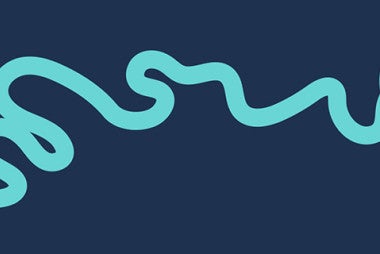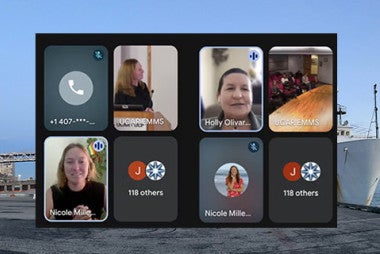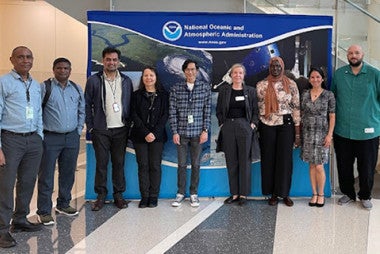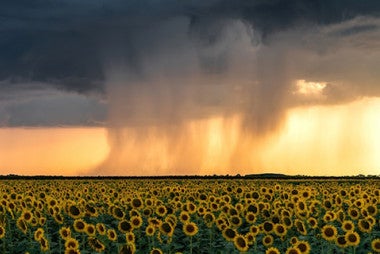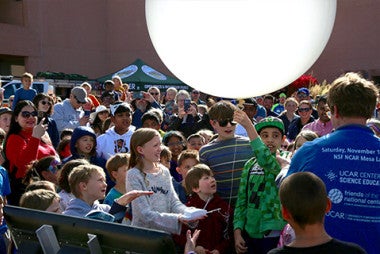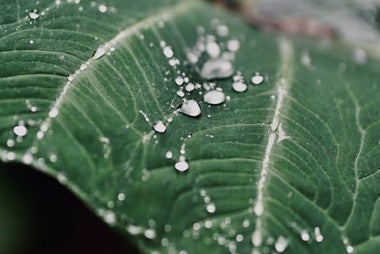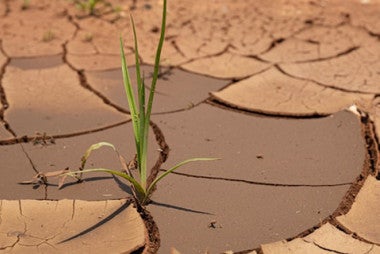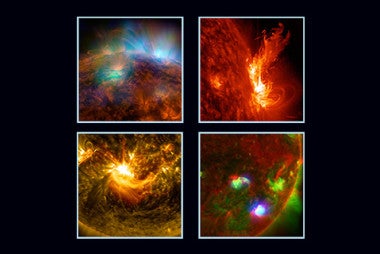Art meets science at the Mokupāpapa Discovery Center in Hilo, Hawaiʻi
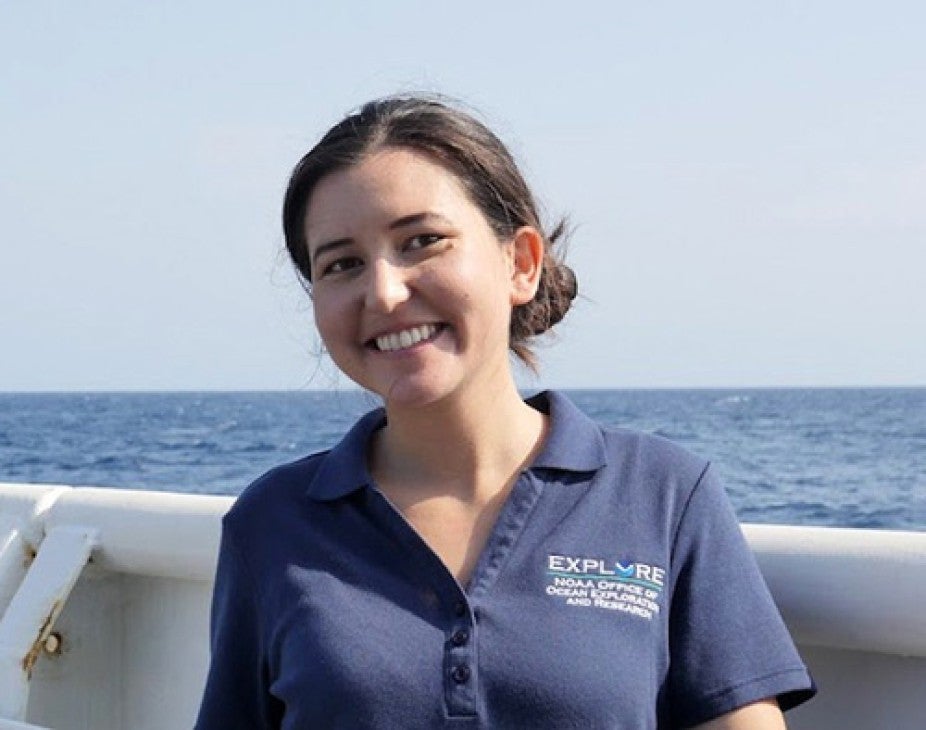
Rachel Gulbraa of NOAA Ocean Exploration onboard the Okeanos Explorer in 2019. Credit: NOAA.
The ocean covers 70% of Earth’s surface yet we know comparatively little about the diversity of life at its depths. To learn more, the NOAA Ship Okeanos Explorer conducted a series of seafloor mapping expeditions in 2024 around the Papahānaumokuākea Marine National Monument, one of the largest marine conservation areas in the world near the Hawaiian Islands.
Education and public outreach programs at the Mokupāpapa Discovery Center in Hilo, Hawaiʻi brought images from the ocean’s depths up to the surface and were a cornerstone of the experience for visitors to the center.
Rachel Gulbraa is a communicator with the UCAR Cooperative Programs for the Advancement of Earth System Science (CPAESS) who works with NOAA Ocean Exploration to engage the public through science communication and outreach.
In September 2024, Gulbraa and NOAA colleagues collaborated with staff at the Mokupāpapa Discovery Center to plan two days of public engagement activities that coincided with the Okeanos’ arrival at the Port of Hilo. Pilina Kai Lipo: Connecting to the Deep Ocean evolved into an interdisciplinary event that joined art and science with the deep ocean as its anchor. All activities focused on increasing awareness of life in the depths of the waters in and around Papahānaumokuākea Marine National Monument.
The highlight of the outreach event was a series of drawing and painting classes showcasing deep-sea creatures seen on previous Okeanos expeditions to the monument.
“We’ve learned from previous expeditions that art is a great way to engage local communities and it was important for us to connect with the Hilo community because we were coming into their port, their space,” said Gulbraa.
To bring art into the program, she reached out to Patrick Ching, a Hawaiʻi conservationist and wildlife artist known for capturing and preserving local biodiversity through painting. These interests, paired with his fisheries expertise, have grounded his passion for the monument and in particular, the deep sea.
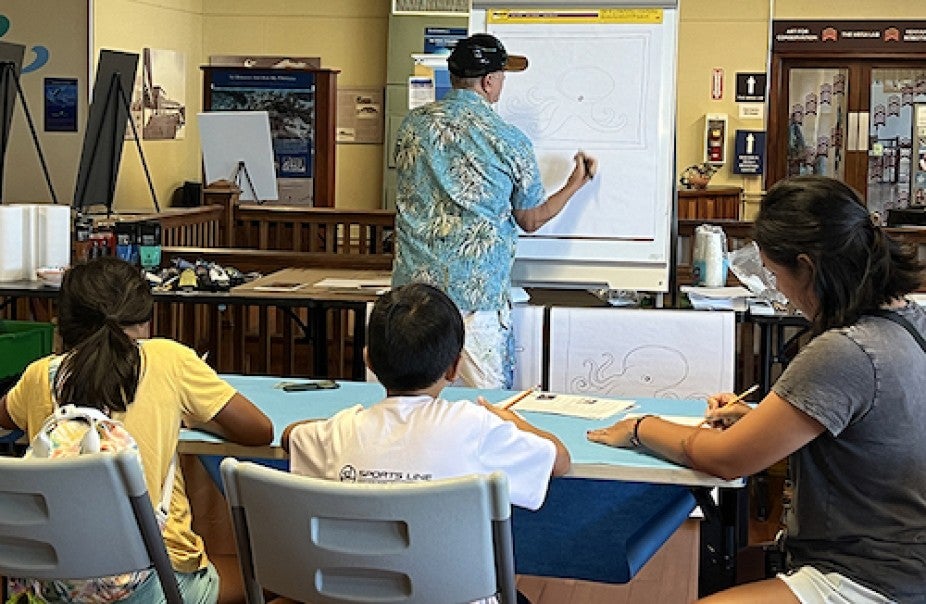
Artist Patrick Ching demonstrating techniques for painting an octopus. Credit: NOAA
“The event at Mokupāpapa stirred up lots of enthusiasm in the community. I was as excited as anyone to participate,” said Ching. “I learned so much about the fascinating animals and the deep-sea ecosystems and am looking forward to doing more art with the imagery provided by the Okeanos and its crew.”
Together, they developed a program for attendees to paint deep-sea creatures. The options for creatures to paint were many and varied, ranging from armored sea robins to bright, basket-like brisingid sea stars, to sea toads and newly discovered octopus species. Gulbraa initially thought that everyone would paint the same thing in unison, “but it ended up being much more individualized,” she says.
Each artist registered in advance and selected the animal they wanted to paint. Ching produced a preliminary sketch of the creature’s body that was not detailed but provided enough prompts for each person to start painting their canvas. As he moved around the room, Ching coached each artist by providing individualized lessons in technique along with suggestions and explanations for modifications that could enhance their painting.
Gulbraa and another colleague were onsite to help attendees select paint colors, distribute brushes, and to field other questions. Each activity was allotted 45 minutes, but people became so engrossed in their paintings, losing track of time, that Gulbraa arranged another space for them to finish painting so that the next class could start on time.
“The paintings were gorgeous,” says Gulbraa. “The activity allowed us to go deep in terms of engagement. While he [Patrick] was working with about 12 students at a time, the people who participated in this activity were there for hours and hours. I feel like anyone who participated in this art activity is going to remember this experience and the animal they chose to paint.”
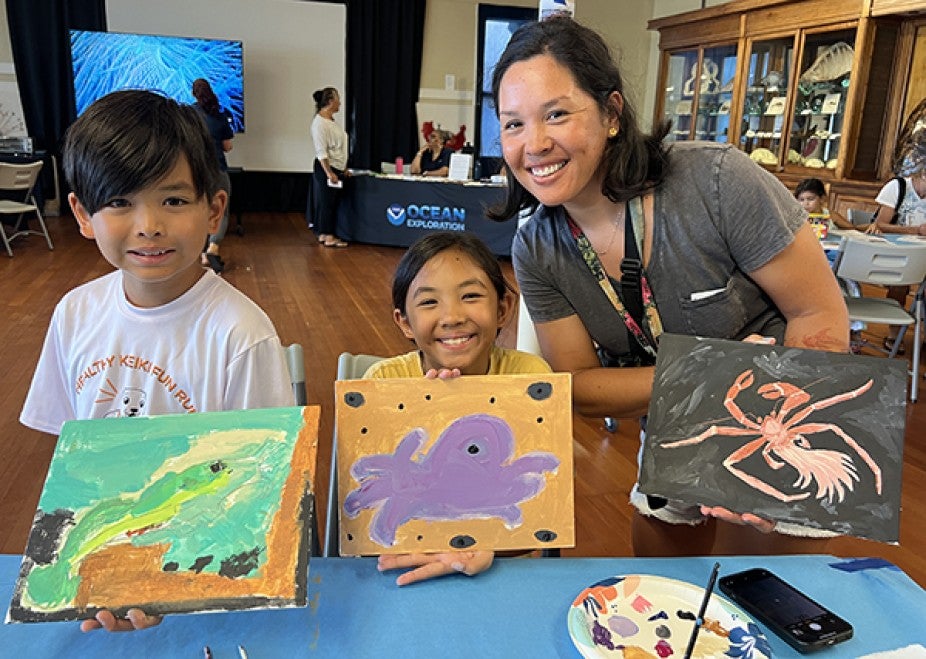
Artists display their sea creature paintings. Credit: NOAA
As a backdrop to – and reinforcement of – the painting activities, Gulbraa created a movie rich with local images like coral gardens, canyons and seamounts, and animals that live deep below the surface in the area around the monument. She projected the movie onto a large screen where visitors could linger and learn.
Last year, Gulbraa organized another community art experience in Alaska with the Seward Arts Council and local artists. This one resulted in a 40 foot, ocean-themed mural on the side of a building, again, drawing on local imagery captured by the Okeanos Explorer on a remotely operated vehicle expedition in remote Alaskan waters. All community members were welcome to participate by painting one of many deep-sea images on a tile. Those tiles now form a border around the mural that is visible on approach to the ocean.
After hearing attendee’s comments about the positive impact of the programming in Hawaiʻi, Gulbraa is thinking about how to improve in the future.
“I’m like, gosh, I want to do this all the time. Coming into this job I had great aspirations about meeting people where they’re at and using existing values to connect to what they care about. Using art to inform science and science to inform art has endless possibilities.”
